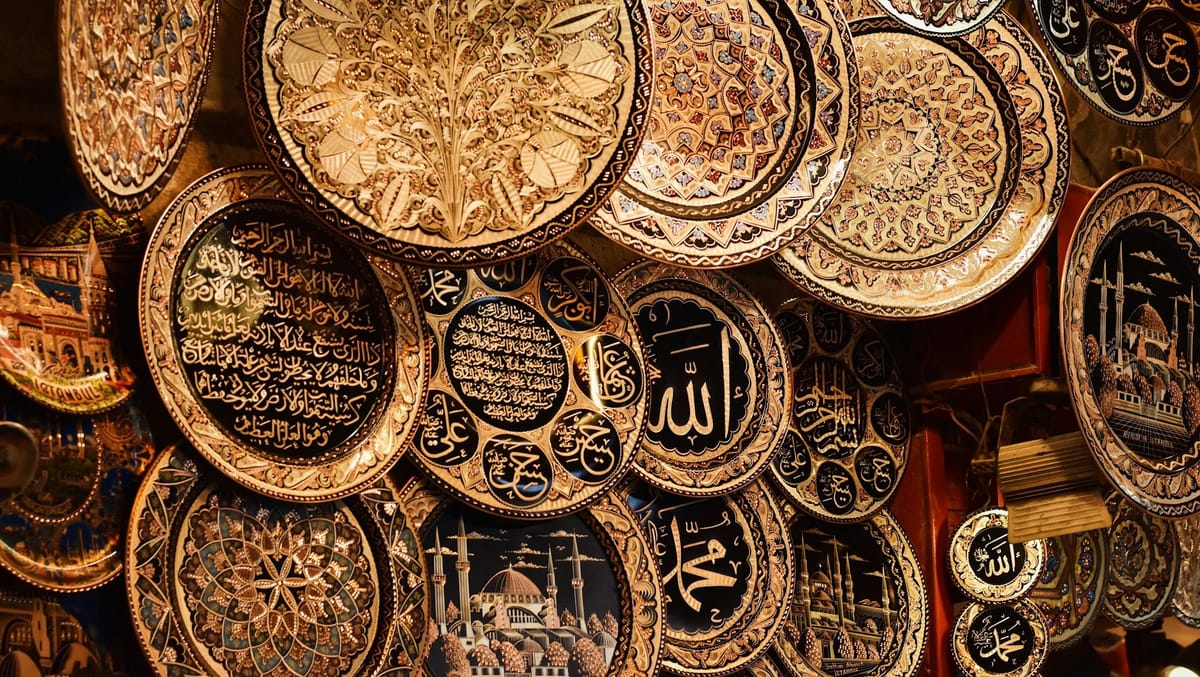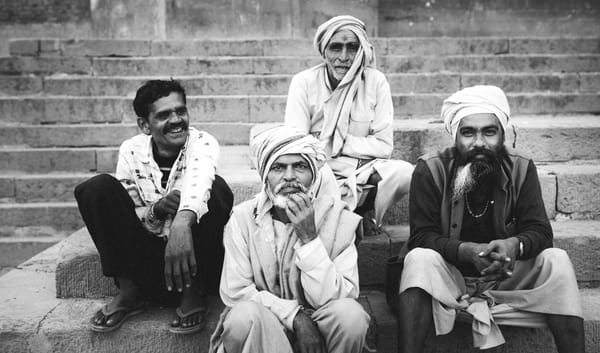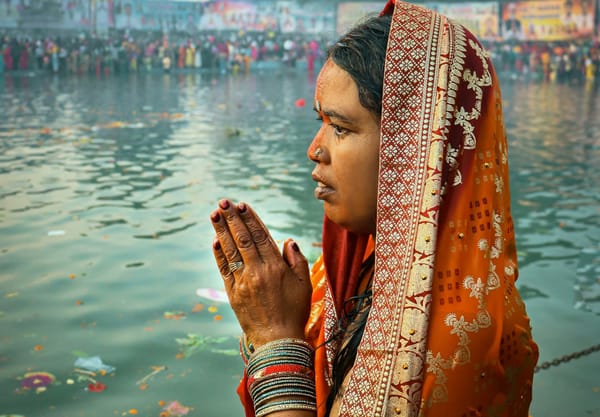The Political Genesis of Islam: Understanding the Caliphate's Enduring Legacy

Contemporary discussions about the relationship between Islam and politics often assume that religious and political spheres can or should be separated, projecting modern Western concepts of secularism onto historical Islamic contexts. However, this perspective fails to account for the fundamental structural differences between Islamic civilization and other religious traditions.
Unlike Christianity, which developed for three centuries before gaining political power, or Dharmic traditions that primarily emphasize individual spiritual liberation, Islam emerged as both a religious movement and a political entity from its inception.
The proclamation of the Islamic State (ISIS) caliphate on June 29, 2014 – deliberately timed for the first day of Ramadan – serves as a stark reminder that the concept of Islamic governance remains a powerful force in contemporary geopolitics. To understand why such movements continue to emerge, we must examine the foundational period of Islamic history, when the structures of Islamic political thought were established by the companions of the Prophet himself.
The Concept of Caliphate: Origins and Meaning
The institution of the caliphate derives from the Arabic term khalifa, meaning "successor" or "deputy." During Muhammad's lifetime, when he departed Medina for military campaigns, he would appoint a khalifa to govern the city-state in his absence. This practical administrative arrangement established the precedent that Islamic religious authority and political governance were naturally unified under a single leader.
The caliphate represents more than mere political succession; it embodies the Islamic ideal of organizing society according to divine will (hukm Allah). Unlike secular systems where political authority derives from popular consent or constitutional frameworks, the caliph's legitimacy stems from his role as the earthly representative of divine authority, implementing Islamic law (Sharia) across all aspects of society.
This theological-political fusion creates what scholars have termed a "theo-democracy" – a system where divine sovereignty is exercised through human agents who are accountable both to God and the community of believers (ummah). The caliphate thus became the institutional mechanism through which Islamic civilization sought to realize its vision of a divinely guided social order.
The Succession Crisis and the Birth of Islamic Political Theory
Muhammad's death in 632 CE precipitated Islam's first constitutional crisis. Unlike established monarchies with clear succession protocols, the nascent Islamic community faced the unprecedented challenge of transferring both religious and political authority without explicit guidance from the Prophet.
According to mainstream Sunni sources, Muhammad left no written instructions regarding succession, creating a leadership vacuum that would shape Islamic political development for centuries.
The demographic composition of the early Muslim community complicated this succession question. The Muhajirun (emigrants from Mecca) represented the established Quraysh tribal elite who had abandoned their privileged positions to follow Muhammad.
The Ansar (helpers from Medina) were primarily agricultural communities who had provided crucial support during Islam's formative years. This social stratification reflected broader questions about meritocracy, tribal privilege, and religious authority that would repeatedly surface in Islamic political discourse.
The selection of Abu Bakr as the first caliph occurred while Muhammad's immediate family, including his son-in-law Ali, were occupied with funeral preparations. This timing effectively excluded potential alternative candidates from the succession process, establishing a precedent where political expediency often trumped theoretical legitimacy in Islamic governance.
The Ridda Wars: Consolidating Religious-Political Authority
Abu Bakr's brief reign (632-634 CE) proved decisive in establishing Islam's political character. The Ridda (apostasy) wars represented far more than religious enforcement; they constituted a fundamental assertion of state power over tribal autonomy. Many Arabian tribes had pledged allegiance (bay'ah) to Muhammad personally, viewing his death as the natural end of their political obligations to the Islamic state.
Abu Bakr's military response to this "apostasy" established several crucial precedents:
- Irreversibility of Islamic conversion: Once a community accepted Islam, withdrawal became treason punishable by military force.
- Unified political authority: The caliph's temporal power extended beyond purely religious matters to include taxation, military service, and civil obedience.
- Subordination of tribal autonomy: Traditional Arabian tribal independence was subordinated to the centralized Islamic state.
These campaigns effectively transformed Islam from a religious movement into a territorial state with defined boundaries, tax collection systems, and military forces. The successful suppression of the Ridda movements demonstrated that Islamic political authority could enforce its will through organized violence, establishing precedents that would characterize Islamic expansion for centuries.
Imperial Expansion and the Dhimmi System
The spectacular military successes of the early caliphate – including the complete conquest of the Sassanid Empire and significant territorial gains from the Byzantine Empire – created new challenges for Islamic political theory. The incorporation of vast non-Muslim populations required systematic approaches to governance that went far beyond the original Arabian tribal context.
The dhimmi system, formalized during Umar's caliphate (634-644 CE), represented a sophisticated attempt to integrate religious minorities into the Islamic political order. This system granted Christians and Jews (ahl al-kitab or "People of the Book") protected status while establishing their subordinate position within the Islamic hierarchy:
- Economic subordination: The jizya tax created a distinct fiscal burden for non-Muslims
- Legal discrimination: Dhimmis faced restrictions on public religious expression, construction of new worship places, and bearing arms
- Social hierarchy: Non-Muslims were systematically excluded from positions of political authority
This framework reflected Islam's self-understanding as the final and complete divine revelation, destined to supersede previous religious traditions. The dhimmi system thus became both a practical governance tool and a theological statement about Islam's universal political mission.
The Crisis of Uthman and the Breakdown of Consensus
The caliphate of Uthman ibn Affan (644-656 CE) revealed the internal contradictions within early Islamic political theory. Despite his impeccable credentials as a companion of the Prophet and member of the Quraysh elite, Uthman's reign was marked by increasing internal dissension. The cessation of major conquests meant that the steady flow of war booty (ghanima) that had funded the expanding Islamic state began to decline, creating economic pressures that exposed underlying social tensions.
Uthman's alleged nepotism – appointing relatives to key positions – reflected deeper questions about merit versus tribal privilege in Islamic governance. The concentration of wealth and power within Uthman's Umayyad clan generated resentment among both early converts and newer Muslims who felt excluded from the benefits of Islamic expansion.
The assassination of Uthman by fellow Muslims while he was reading the Quran represents a watershed moment in Islamic political development. This act of violence against a legitimate caliph during an act of worship demonstrated that religious piety alone could not guarantee political legitimacy in the Islamic system, which establishes the fact that there is no inherent unity in Islam (Dharmic view of religion), but rather it is a political enterprise.
The First Civil War and the Fracturing of Islamic Unity
Ali's reluctant acceptance of the caliphate (656-661 CE) and his subsequent assassination marked the definitive end of Islamic political unity. The series of civil wars known as the Fitna established patterns of sectarian division, political violence, and competing claims to legitimate authority that continue to characterize Islamic politics.
The emergence of distinct factions during this period – the supporters of Ali (later Shia), the Umayyad loyalists (later Sunni mainstream), and the radical Kharijites – reflected fundamental disagreements about Islamic political theory:
- Should leadership pass through Muhammad's family line or be selected by community consensus?
- Should political disputes be resolved through divine signs or human arbitration?
- Should Islamic leadership be restricted to specific tribes or open to all believers based on merit and piety?
The killing of Hussain, Muhammad's grandson, at the Battle of Karbala (680 CE) definitively demonstrated that even the closest family ties to the Prophet could not guarantee political security in the Islamic system.
Historical Patterns and Contemporary Implications
The events of the first thirty years after Muhammad's death established enduring patterns in Islamic political culture:
- Separation of mosque and state became theologically impossible
- Multiple competing claims to Islamic authority became normalized
- Military force became an accepted means of resolving leadership disputes
- Despite egalitarian rhetoric, political power remained concentrated within tribal and family networks
- Internal unity was often maintained through external conquest and expansion
These patterns appear consistently throughout Islamic history, from the Abbasid revolution to the Ottoman Empire, from the creation of Pakistan to contemporary movements like ISIS, the Taliban, political turmoil in Bangladesh, and various Islamist political parties worldwide.
Comparative Analysis with Other Religious Traditions
The political development of early Islam contrasts sharply with other major religious traditions. Christianity developed for three centuries before gaining imperial support under Constantine, allowing for the gradual development of church-state distinction.
Dharmic traditions – Hinduism, Buddhism, Jainism, and Sikhism – emphasize individual spiritual liberation (moksha, nirvana) rather than collective political organization, creating space for diverse political arrangements.
Islam's unique trajectory – emerging simultaneously as religious revelation and political movement – created structural impediments to the separation of religious and secular authority that characterizes modern Western governance systems. The Quranic concept of tawhid (divine unity) extends beyond theological monotheism to encompass political, legal, and social unity under Islamic principles.
Conclusion
The caliphate's enduring appeal in contemporary Islamic political movements reflects not merely nostalgia for past glory but the persistence of foundational theological-political concepts established during Islam's formative period. The actions of Muhammad's companions – the most authentic interpreters of Islamic principles – demonstrate that political authority and religious legitimacy were considered inseparable from Islam's earliest days.
Understanding this historical reality does not require value judgments about Islam's contemporary role but does demand recognition that modern attempts to privatize or depoliticize Islam face theological and historical obstacles that Western secular frameworks often fail to comprehend. The ghost of the caliphate continues to influence Islamic political thought precisely because it represents not a historical accident but a theological imperative rooted in Islam's foundational understanding of divine sovereignty and human society.
The implications extend beyond academic Islamic studies to contemporary international relations, domestic integration policies, and interfaith dialogue. Recognition that Islam emerged with an inherently political character provides crucial context for understanding why secular governance models often struggle to accommodate Islamic political aspirations and why movements seeking to restore Islamic governance continue to emerge across diverse cultural and historical contexts.





